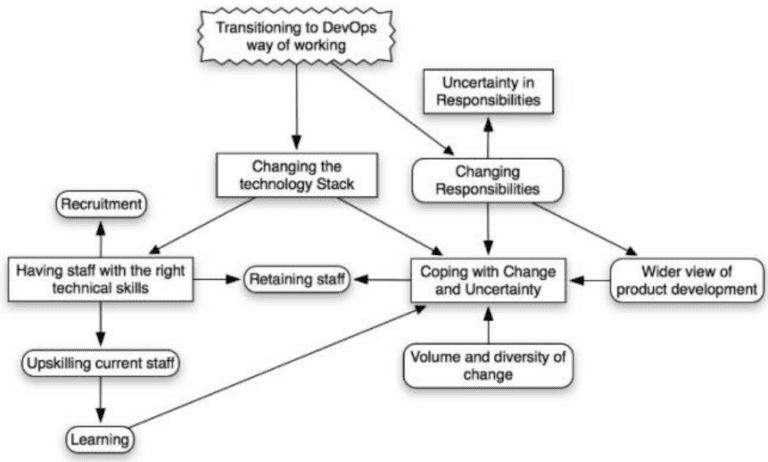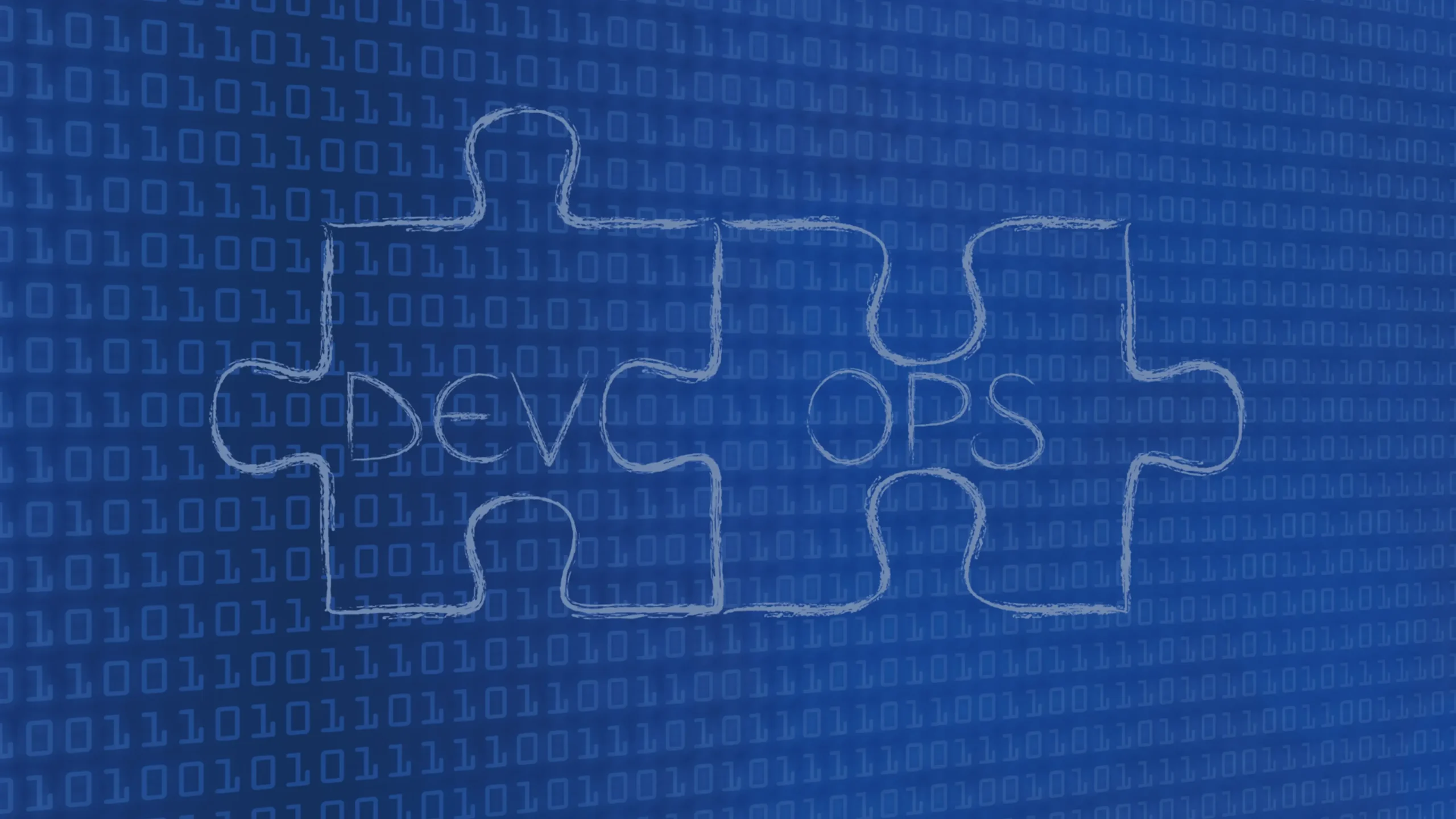Introduction
DevOps is a set of principles and DevOps practices aimed at improving collaboration between development and IT Operations. Challenges are inevitable while adopting a new methodology, especially when accustomed to an organized system, can be even more complicated in the professional world. In this context, we have identified five common challenges that arise when adopting DevOps in software projects. Overcoming these challenges with best practices sets you apart from your competitors. We provide a list of top DevOps practices that can accelerate your project delivery. Join us in mastering the art of DevOps.
DEVOPS CHALLENGES
1. Security
In DevOps workflows, managing credentials between teams creates security risks. As it necessitates integrating security principles throughout the development and deployment process, security in DevOps is a key challenge. DevOps often places an emphasis on automation and speed, which might result in vulnerabilities if security isn’t given first priority. To maintain a strong security posture in the fast-moving DevOps context, teams must constantly evaluate, test, and safeguard their infrastructure, operations, and code.
Table of Contents
- 1. Security
- 2. Culture Shift
- 3. Performance Conflicts
- 4. Deployment Challenges
- 5. Dev Vs Ops
- 1. CI/CD (Continuous Integration/Continuous Deployment)
- 2. Version Control
- 3. Log Management
- 4. Configuration Management
- 5. Infrastructure Automation
- 6. Chaos Engineering
- 7. Automation and Infrastructure as Code (IaC)
- 8. Microservices and Containers
- Conclusion
2. Culture Shift
A major DevOps difficulty is culture transformation, making it necessary for companies to adopt automation, teamwork, and a continuous improvement approach. Although it can be challenging, shifting long-standing cultural norms and organized behaviour is crucial for the success of DevOps as it affects how teams collaborate, communicate, and adjust to new techniques and technology.
3. Performance Conflicts
Performance conflicts in DevOps can occur when various teams prioritize speed and stability differently. Operational teams concentrate on system dependability, while developers might prefer quick deployments. It is difficult to strike a balance between these goals; to achieve ideal performance without compromising stability, good teamwork, communication, and the use of mechanisms like continuous monitoring are necessary.

Image defining Challenges related to DevOps Adoption
Picture Source: Senapathi, M., Buchan, J., & Osman, H. (Year of Publication). DevOps Capabilities, Practices, and Challenges: Insights from a Case Study. Auckland University of Technology. Auckland, New Zealand.
4. Deployment Challenges
Challenges arise during and after the DevOps deployment process. These include problems with configuration inconsistencies, vulnerabilities, unstable environments, sophisticated version control, and challenges in efficiently scaling and monitoring systems. In order to ensure long-term system reliability and peak performance, post-deployment difficulties include the ongoing pursuit of improvement, the automation of repetitive processes, and the promotion of efficient interaction. Overcome with best DevOps practices.
5. Dev Vs Ops
A fundamental challenge in DevOps is finding the right balance between the speed focussed development (Dev) and the stability-focused operations (Ops). It involves aligning new features and improvements quickly with the necessity of maintaining system reliability, security, and performance. Achieving this balance is crucial for efficient and successful DevOps implementation.
DEVOPS PRACTICES
1. CI/CD (Continuous Integration/Continuous Deployment)
Software development and deployment procedures are automated by one of core DevOps Practices called CI/CD (Continuous Integration/Continuous Deployment). It assures that code updates are regularly merged, tested, and released into production, facilitating the delivery of software quickly and consistently. CI/CD speeds up development, lowers mistake rates, and improves communication between the operations and development teams.
2. Version Control
Version Control is an essential DevOps technique that ensures code and configuration management in software development. It facilitates fast deployment, automated testing, and backup procedures by allowing collaboration, tracking changes, and offering a history of code modifications. In DevOps workflows, well-known tools like Git and platforms like GitHub and GitLab facilitate version control, improve teamwork, and preserve code traceability.
[6/8] Version control helps scale. ⚖️ pic.twitter.com/HmsYZh3sHy
— Zeplin (@zeplin) October 30, 2023
[7/8] Here’s what a good #versioncontrol process allows you to do: pic.twitter.com/NYBCK1mzT6
— Zeplin (@zeplin) October 30, 2023
3. Log Management
One of the most important DevOps practices is log management, which includes gathering, storing, and evaluating log data for security, performance monitoring, and problem solving. Logs are centrally stored, parsed, and visualized by tools such as ELK Stack, Splunk, Graylog, and Fluentd, which facilitate team troubleshooting, enhance system performance, and uphold security and dependability. This procedure promotes collaboration and automation for a more productive workflow, which is in line with DevOps concepts.
4. Configuration Management
The process of methodically monitoring and controlling an IT environment’s hardware, software, and settings is known as configuration management. In the context of DevOps Practices, It permits dependable infrastructure provisioning and application deployment by ensuring consistency, traceability, and version control. System security, scalability, and stability are all dependent on configuration management, which also facilitates more efficient communication between operations and development teams.
5. Infrastructure Automation
Minimizing human involvement with IT systems through the creation of repeating programs or functions that may be cited on commands or by other applications is known as infrastructure automation. Within the DevOps Practices methodology, infrastructure automation refers to the use of code and automation tools that accelerate the provisioning, administration, and scalability of infrastructure. The quick, continuous, and collaborative software development and deployment processes that are the cornerstone of DevOps methods can only be achieved with this methodology.
6. Chaos Engineering
Chaos Engineering is one of pivotal DevOps practices focused on improving system reliability and resilience. It involves deliberately injecting controlled failures and chaos into a software system to identify vulnerabilities and assess its ability to withstand unexpected issues. By simulating real-world scenarios, teams gain insights into potential weaknesses, allowing them to proactively implement safeguards and optimize their infrastructure and applications. This practice, emphasizing the importance of efficient system design and fault tolerance. It helps in minimize downtime, enhance customer experience, builds scalable systems.
Watch the video, An expert from Microsoft explaining chaos engineering importance.
7. Automation and Infrastructure as Code (IaC)
Infrastructure as Code (IaC) and Automation are core techniques of DevOps Practices. Automation is the use of tools and programs to carry out operations inevitably that were previously done by hand. By reducing human error, increasing efficiency, and assuring consistency, it simplifies procedures. Automation in the context of DevOps refers to a range of tasks, including testing, monitoring, configuration management, and software deployment. This procedure expedites the supply of software and increases its predictability and dependability. IaC, on the other hand, promotes scalability and agility by managing infrastructure through the use of code. When combined, automation and IaC allow teams to concentrate on innovation, generating value for the company and maximizing resource use.
8. Microservices and Containers
Microservices and containers are key DevOps practices. Microservices refers to Applications are divided into separate, independent parts. Similar to Docker, containers are isolated, lightweight units that are used to package and run applications, providing consistency throughout development, testing, and operational settings. This method is perfect for continuous integration and delivery (CI/CD) as it facilitates scalability, agility, and simplified deployment. Containers are light weighted that designed to package and run applications and their dependencies which provide consistency across different environments. By streamlining the development, testing, and deployment processes, DevOps teams may increase collaboration and speed up product delivery.
Conclusion
DevOps is an effective method of developing software nowadays that emphasizes efficiency and teamwork. Businesses can gain a competitive edge by embracing best devops practices and acknowledging and addressing challenges.
Sparity simplifies the process of utilizing infrastructure resources as code for developers, testing, QA, and operations teams, seamlessly integrated into the familiar tools within the DevOps pipeline.














